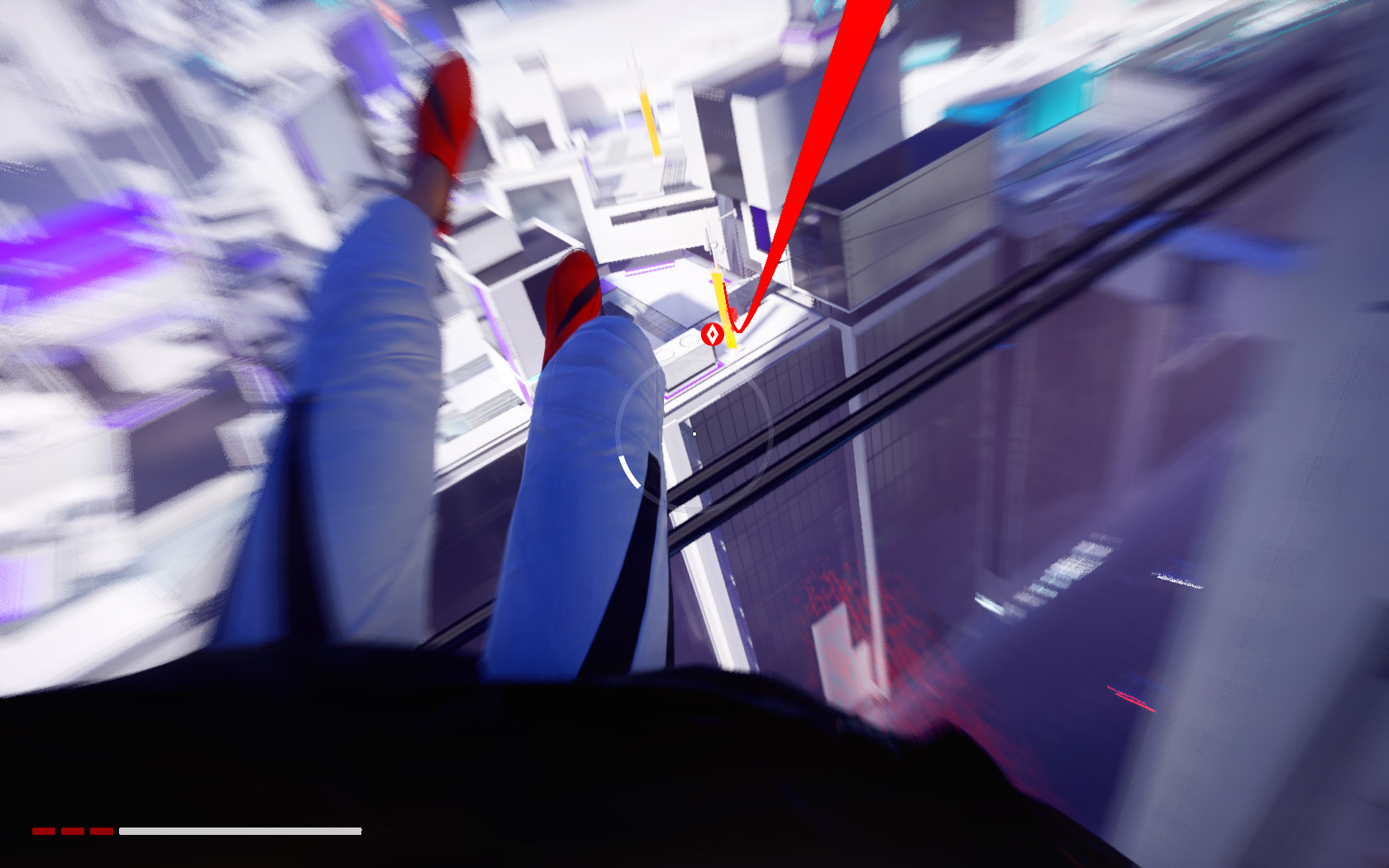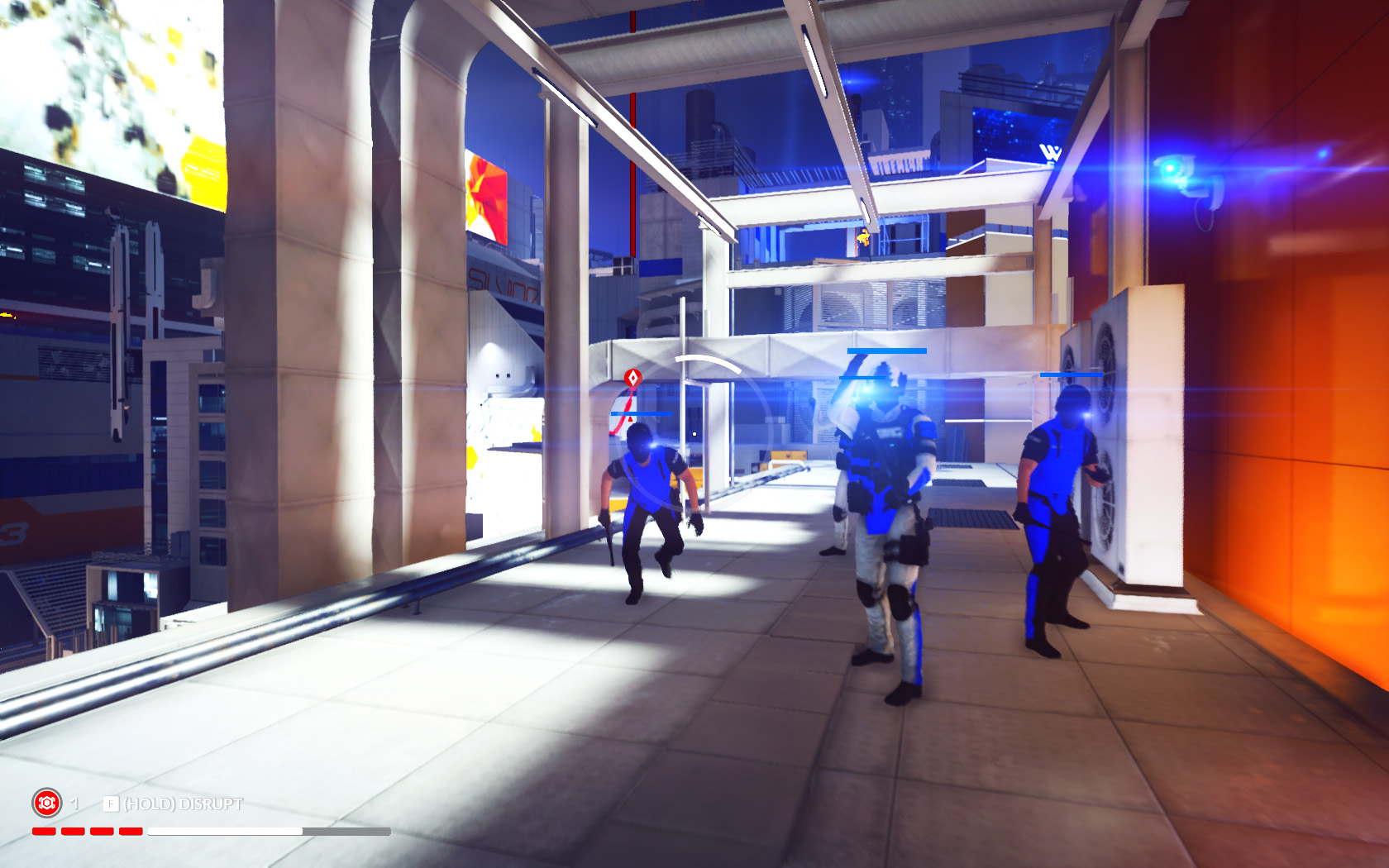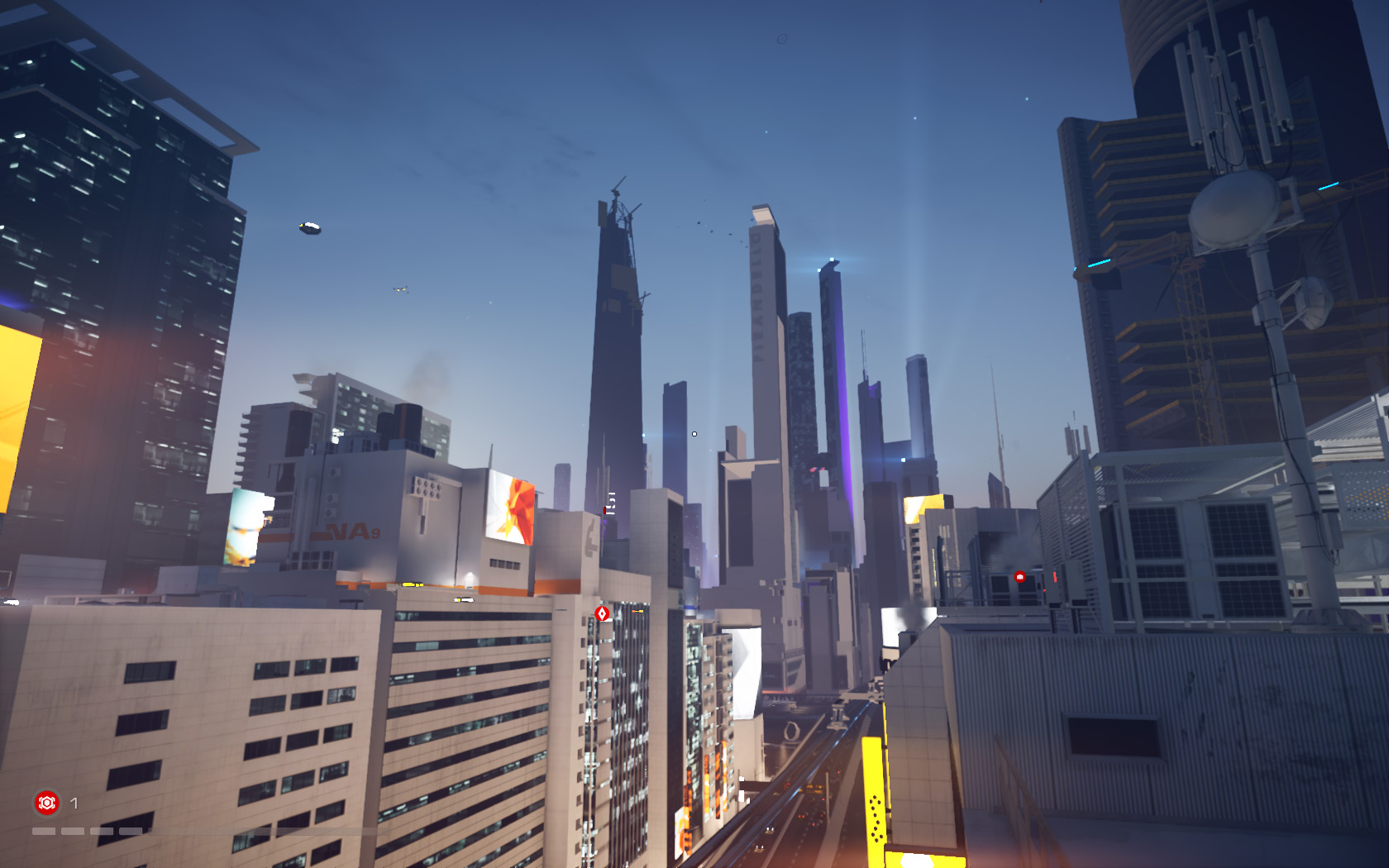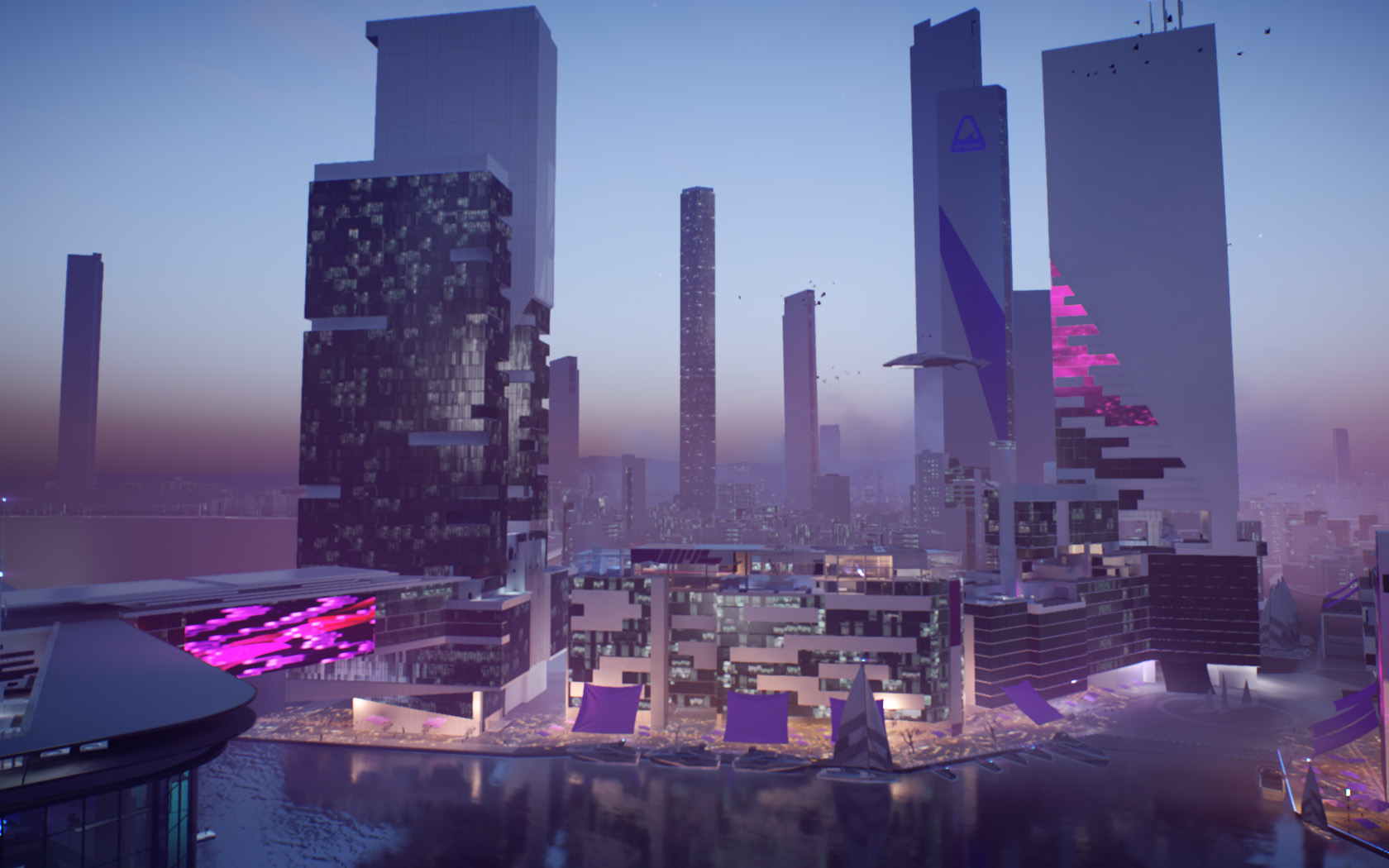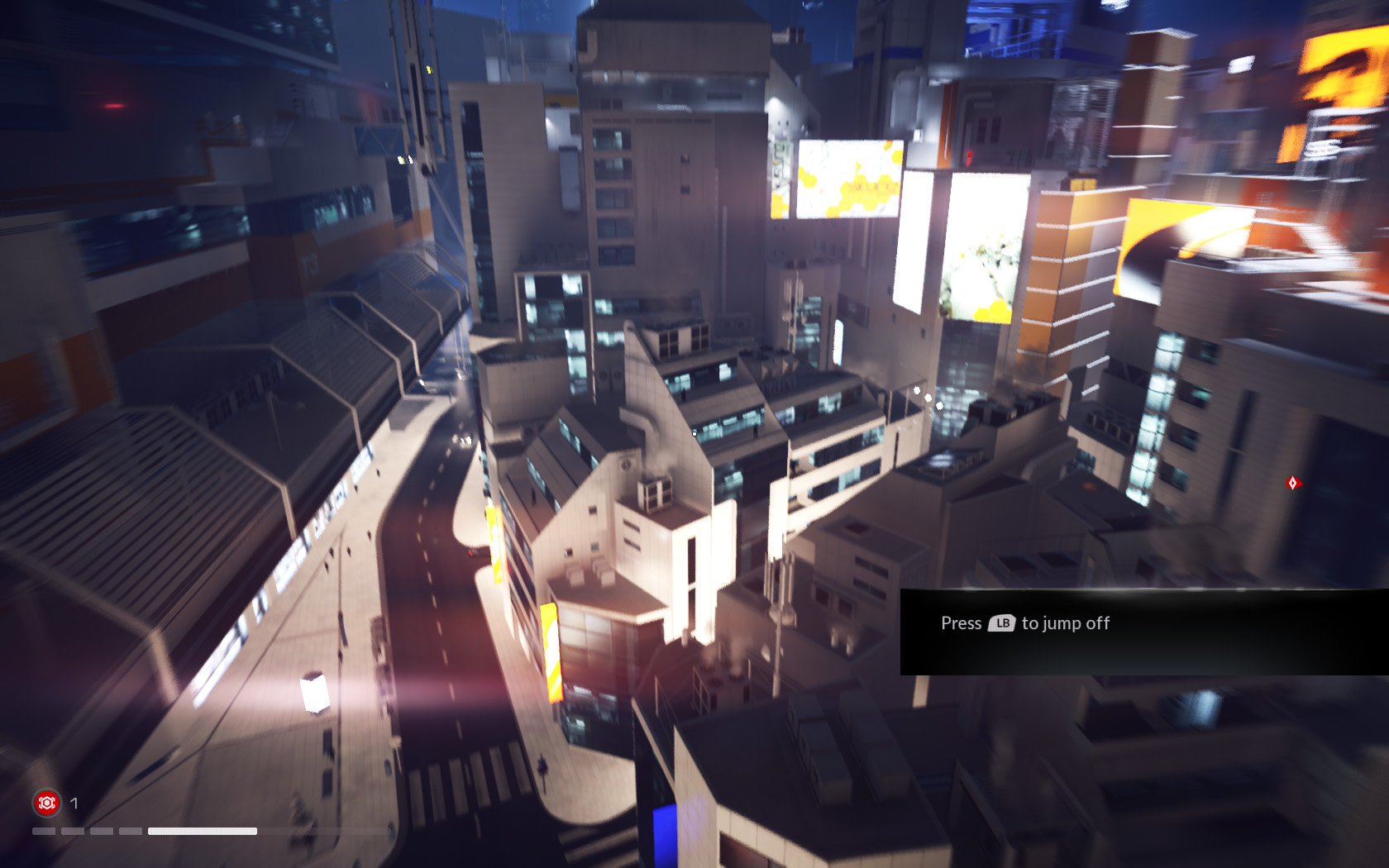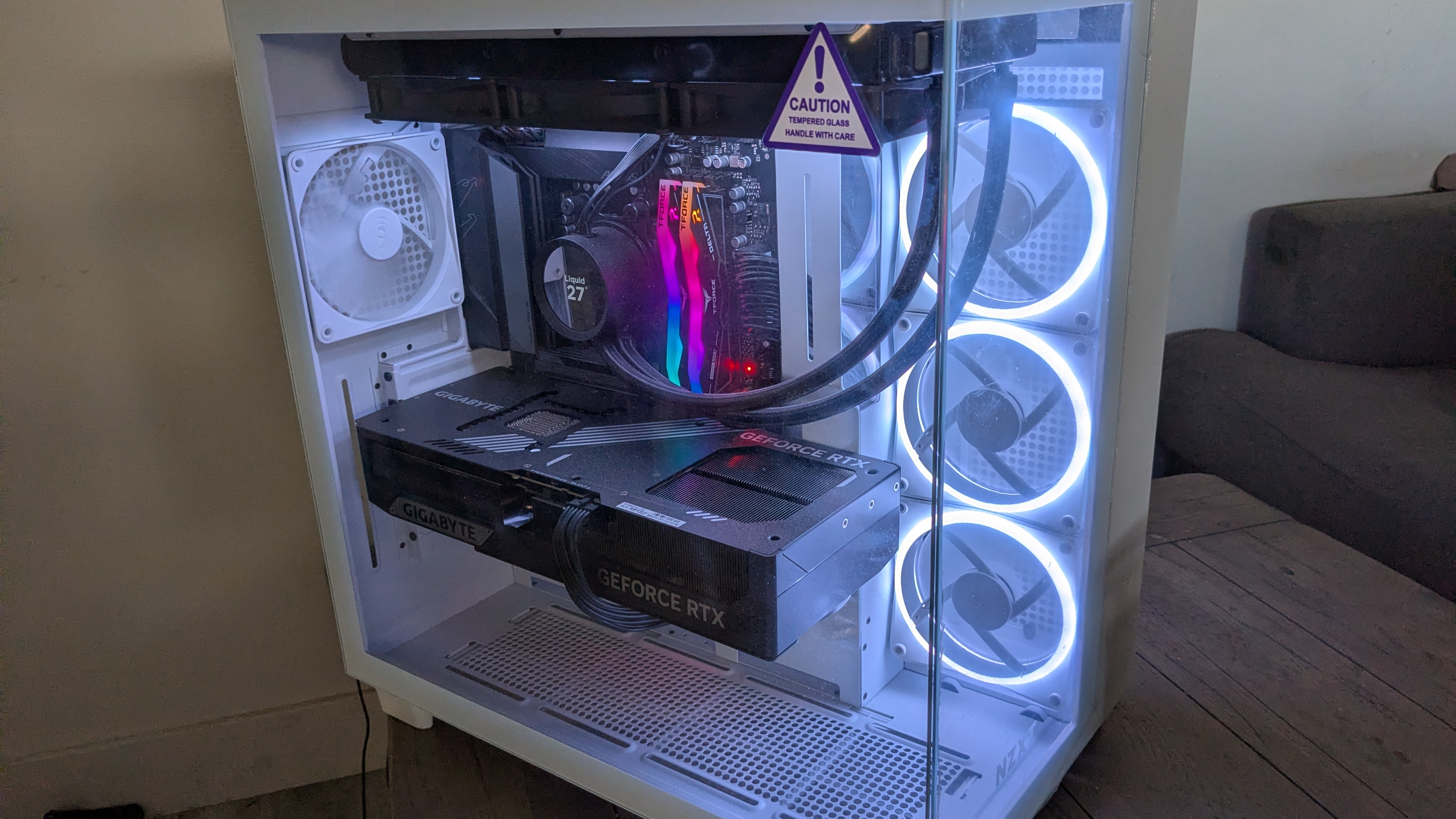Our Verdict
Catalyst is as close to a definitive version of a Mirror’s Edge game as we’re likely to get, despite retaining some of the first game’s issues.
PC Gamer's got your back
What is it? Long-awaited sequel to the first-person free-running game.
Expect to pay: $60/£50
Developer: DICE
Publisher: EA
Reviewed on: i5-3570K @ 3.40GHz, 16GB RAM, GTX 970
Multiplayer: No
Link: www.mirrorsedge.com
I’m delighted that I’ve lived long enough to see a second Mirror’s Edge. The first game is one of those curios that seemed like such a weird thing for a big publisher to make: a free-running game set in a whitewashed dystopia, made by a team best known for shooters where the guns are somehow the worst bit. I was hoping Catalyst would make the first game feel like a tech demo by comparison and it does—this feels like a far more complete and refined version of the ideas in the 2008 original, though not every one of its issues has been totally fixed.
Mirror’s Edge: Catalyst is, like its predecessor, a first-person platformer focused on free-running. The big switch-up this time is that it’s set in a seamless open world playground, rather than a series of linear levels. Far from being an open world in the mold of GTA, though, this is sort of like a Zelda-style large hub, with new areas opening up over time as your toolset expands. Introduced in Catalyst is the magrope, a sort of grappling hook that attaches to specific points in the world. Acquiring this, and upgrading it, offers new ways to get around the city. While Catalyst is as intricate, complex and exhilarating when it comes to platforming as its predecessor was, a flawed new combat system sadly holds the game back from being the perfect version of Mirror’s Edge I was hoping for.
For those who loved the free-running in the first Mirror’s Edge, that all returns as you remember it, more or less. While acquiring Faith’s full moveset from the first game takes about an hour to unlock within the game’s new tech tree, this’ll give your muscle memory time to readjust to how fast Mirror’s Edge is. It’s been almost eight years, after all. Running up walls, sliding under pipes and performing saving rolls from great heights still requires precise timing and sharp instincts—this is exactly what I loved about the first Mirror’s Edge, and it’s all intact.
There’s nothing else quite like it. I kick Assassin’s Creed a lot when talking about this series, but I can’t help it: I think there’s so much more merit in a platforming-heavy game that requires skill, rather than one where you press just a couple of buttons to leap through an entire world. If you actually have to concentrate while you’re running through a world, you appreciate your surroundings more, and it actually feels rewarding just to travel from one place to another. I think the relative difficulty of platforming in Mirror’s Edge means it’s one of those series that’s always destined to be misunderstood by some players—yet for those who get it, nothing else will be able to provide the same rush.
Catalyst recaptures that, aided enormously by a lovely open world that starts small-ish then gets pretty big. Areas are divided into districts that unlock over the course of the story, each coloured a little bit differently, with some nice variation in architecture and props. The gorgeously purple and very posh Regatta Bay looks like a slice of Ilium from Mass Effect, while the Development Zone is basically a grotty construction site; other areas strongly recall levels from the first Mirror’s Edge.
Collectively, it’s stunning, as close to capturing a futuristic city experience as I’ve seen in a game, and it feels like a much more detailed version of that world you’ve just had linear snapshots of before. Travelling between these districts feels great, thanks to the way DICE conveys player movement through visual effects and sound design. Bolting through the city at an unbroken full speed, it feels a bit like running through the star gate in 2001: A Space Odyssey—a hypnotic swirl of constantly shifting colour, with Faith gliding through it. The only issue is that the dull story usually insists on having one of Faith’s buddies yammer over you exploring these places, which takes a bit away from the city’s mystique.
The magrope is a neat addition—swinging across a freeway at rush hour suddenly made me realise I’ve wanted a first-person Spider-Man game my entire life. I just wish there were more places you can use it. There aren’t many points in the world it latches onto, which is no doubt an attempt to avoid stealing the focus from the free-running. Slightly less convincing is an upgrade you get later in the game to clear new paths with the magrope by pulling panels down from walls—a timed platform puzzle or two aside, it feels like an arbitrary addition.
Keep up to date with the most important stories and the best deals, as picked by the PC Gamer team.
Going open world was the right move. The map is full of optional stuff to do—delivering parcels, or time trials, or even creating time trials and climbing challenges yourself using the simple in-game social tools—but I recommend leaving this stuff until after you’ve finished the game. A lot of it is filler, but speedrunners will lap it up.
Alongside the 10-11-hour main story, there are several sidequests to pick up, as well as a few excellent tower climbing challenges that open up fast travel points. The latter are a bit like those puzzle environments in Assassin’s Creed II, and involve skipping over tripwires and making particularly tricky jumps to reach the top of the tower in Portal-like interiors. Trip a wire, and you won’t be able to escape without fighting a few guards, too. And since fighting anyone in Mirror’s Edge Catalyst isn’t terribly fun, you’ll really feel like you’re being punished for messing these optional asides up.
In 2008, Mirror’s Edge was chewed out for its flawed combat system, which relied on disarming enemies and very basic melee attacks, as well as firing guns. Well, guns are gone, which may be welcome news—but everything else is a little more mixed. The combat is, at its most basic, superior to the first game. It works in two ways: if Faith is running at full speed, a quick tap of the light attack button will knock an enemy out of the way and she can keep running. In that sense, it’s functional and there to facilitate your free-running arsenal, and feels like the sort of thing that would’ve made a lot of sense in the first game. Faith is protected by something called a focus shield, which means you’re safe from gunfire any time you’re running at full speed. Slow down too much, and enemies will be able to take chunks off her health, but keep sprinting and you’ll be okay.
If you find there’s no option but to fight, there’s a melee system where you can punch and kick enemies in different directions of your choosing, while dodging their attacks at the same time. You can make guards tumble off buildings, as well as into each other, which damages two opponents at once. At first this new system seems cool—running across rooftops then booting a guy down to his death before escaping quickly can feel exhilarating, and it makes Faith feel like a superhero as the law enforcement pursues her, GTA-style. But after a few fights, I started to get tired of how low energy the scraps felt, and the annoying enemy types that spam you with cheap attacks.
The tech tree adds little of note to your arsenal throughout the game, except a cool scramble attack that temporarily frazzles enemies, as well as a few damage boosts to the different enemy types in the game. Why not incorporate Faith’s magrope to pull an enemy towards you for an easy knockout blow? That’s the sort of fun thing games normally do. The combat wouldn’t be so bad if you could skip every fight—almost all of the time, you can—but there are at least three mandatory encounters during the story (two take place in the exact same area). And they’re by far the worst parts of Catalyst.
In each instance, you’re dropped into enclosed environments with no escape, where you basically have to run in circles to build up momentum in order to land attacks. It doesn’t work—it’s really bad. One of Faith’s cooler moves is a Mario-like jump attack where she can land on an enemy from a height, doing a lot more damage than punching or kicking. In non-optional fights, this move is your friend, but it’s fiddly to work out how close you need to be to an enemy in order for it to actually activate, and missing one of these attacks can be enough of an error to find yourself shot dead and repeating the same section again. The sentinel, a type of elite unit introduced later in the game, is the ultimate bullshit in Catalyst: an overpowered foe with near-psychic physical attacks who takes an absolute age to beat down. On two occasions I found myself fighting multiple sentinels at once—I was sprinting around the same room again and again, trying to work up enough momentum to knock them out. It felt like it took forever, and seems like the opposite of what Mirror’s Edge is supposed to be about.
It’s frustrating, because these three fights comprise about 20-30 minutes of the entire 10-hour story, but they’re bad enough to overshadow a few of the game’s better levels. I’m surprised that these ended up in the game when the original Mirror’s Edge drew such criticism for its combat. I’d absolutely be giving Catalyst a better score without them.
These moments aside, the story route is packed with levels that are clearly superior to the first game. Catalyst takes you to a load of places outside of the main open world hub. One chapter where you’re tasked with destabilising the earthquake supports of a skyscraper, before making a fraught escape, is one of the best single-player levels I’ve played in years. The missions mix together breathtaking sights with high-pressure set pieces incredibly well. Now I’m clear of the story, too, I’m looking forward to just spending more time in that world—in a game that’s mostly about running, I find myself stopping often just to look at this amazing city skyline from different angles. Aside from some annoying stuttering and lip-syncing issues with the cutscenes, in-game it runs beautifully at 1080p 60fps on both my 970-powered work PC and my less powerful 780-powered build at home.
That’s why, despite the missteps with combat, and another storyline that is just too dry to get invested in even with well-produced cutscenes, I still recommend Catalyst. It’s annoyingly close to being the ideal Mirror’s Edge game, but retains a few of its predecessors’ issues, even if those problems have manifested in different forms. If you loved the first game as much as I did, there’s so much to enjoy about running around this big, gorgeous playground—I just wish DICE had stuck the landing.
Catalyst is as close to a definitive version of a Mirror’s Edge game as we’re likely to get, despite retaining some of the first game’s issues.
